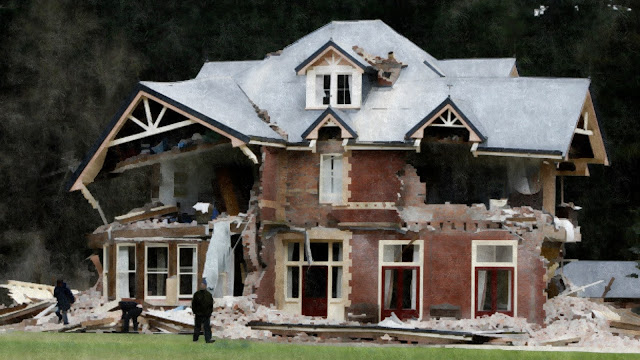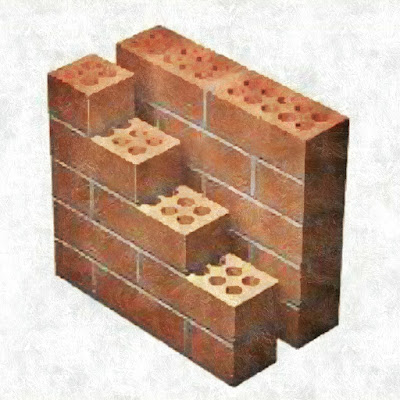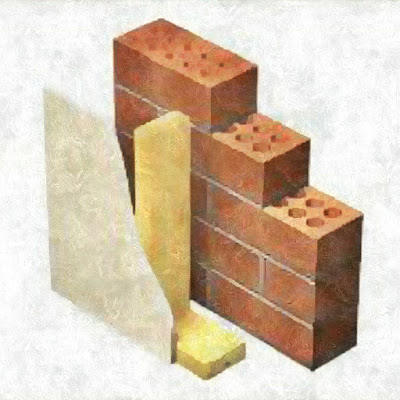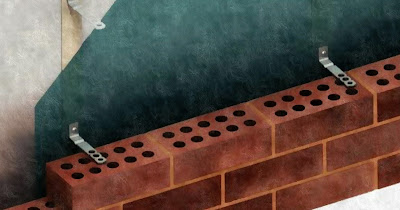
So you are building a new house and you've been wondering what type of external cladding to use. There is no shortage of choice out there, with innovative cladding materials being brought to market regularly. However it's brick masonry that catches your eye.
No doubt you will be aware of some of the advantages of a brick home.
- It looks great
- It's maintenance free
- It's fireproof
- It's insulative
- It's bug and rot resistant
- It stops projectiles during storm events
"How will the bricks stand up to a decent earthquake?"
The weaknesses of brick masonry during an earthquake have been known for centuries. And as such it's a difficult reputation to shake.
To the untrained eye not much has changed in the evolution of bricklaying over the years, however there have been some substantial advances. These changes have made brick houses much more resilient during an earthquake.
The difference between Structural brickwork and a Brick Veneer
First up it is important to understand the difference between structural brickwork and a Brick Veneer.
Structural Brick
Structural Brick Buildings are what have been around for centuries. They are commonly double brick walls and they hold up the building.Bricks are laid in an interlocking way that give the building a lot of compressive strength. However this rigid strength can lead to major blowouts during a seismic event.
Brick Veneers
The majority of brick residential homes are now Brick Veneers. These houses have wooden or metal frames that hold everything up. The framing is used to support a single skin brick wall. Brick Ties or Anchors get laid into the mortar joints of the brick and are then fixed to the framing. How do modern brick veneer houses stand up to earthquakes?2010 & 2011 Christchurch Earthquakes
In 2010 the city of Christchurch was hit by a 7.1 magnitude earthquake, five months later it was again hit by a 6.2. It was interesting to see how brick homes fared.A post earthquake survey noted, many of the major masonry failings related to historical structural brick buildings, however more modern brick veneer houses generally performed well during the Christchurch earthquakes. The small amount of damage associated with brick veneer constructions was due to poor installation.
How are Brick Veneers able to stand up to Earthquakes?
The bond between brick and mortar is the most important single factor affecting brick veneer strength during a quake.The bricklayers workmanship greatly effects the quality of this bond.
- Mortar needs to be mixed to the proper strength. This should be at least 6MPa which can be achieved with a mortar mix of 4:1 sand to cement.
- Many modern clay bricks are made with vertical core holes to reduce weight. When the mortar is mixed wet enough it should be able to flow into the core holes, creating strong mortar dowels that lock the brick course's together. The bricks need to placed quickly after the mortar bed is spread so that it doesn't become too dry.
- Once a brick has been placed it should not be moved. Repositioning the brick will weaken the mortar seal. Recent building standards require brick ties to be screwed to the framing rather than nailed. This stops the bricks being disturbed from hammering vibrations.
Conclusion
So if your new residence is situated in an earthquake zone what should you do?Well brick cladding can certainly hold up during earthquakes. Two important things to remember though.
- Go with the brick veneer construction method
- Make sure to use a reputable bricklaying company. One that knows the building standards and is not going to cut corners along the way.
Wondering how to get those white stains off Brickwork, check out this article on Efflorescence



